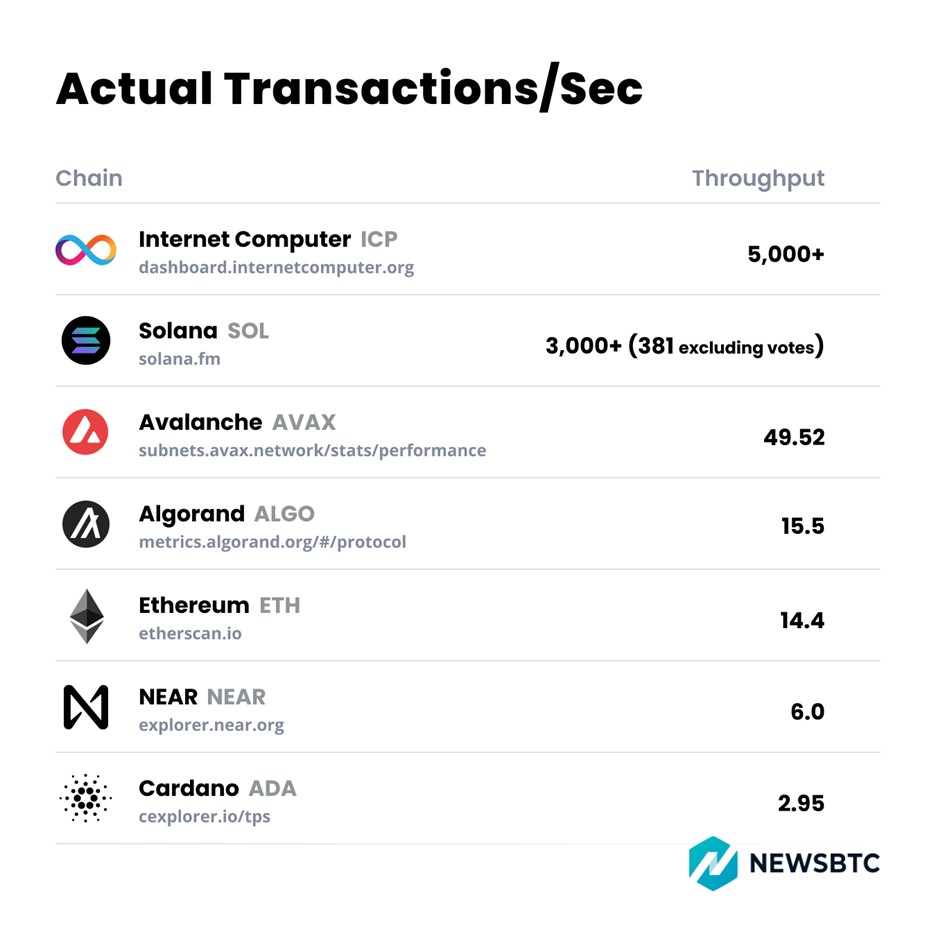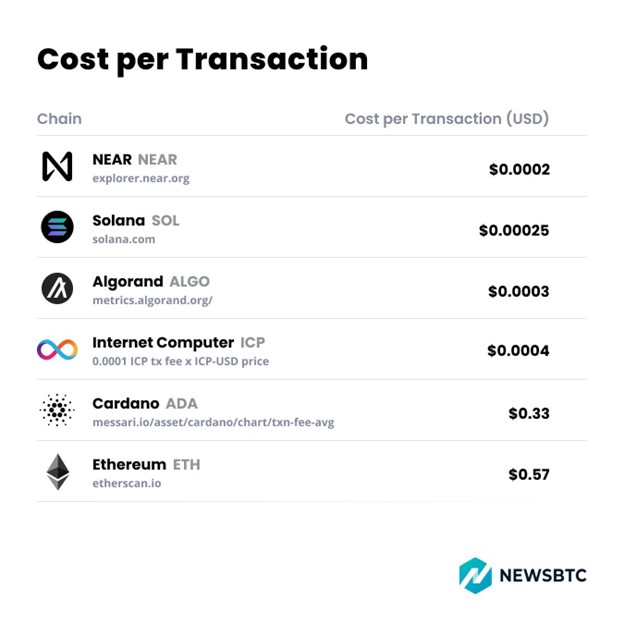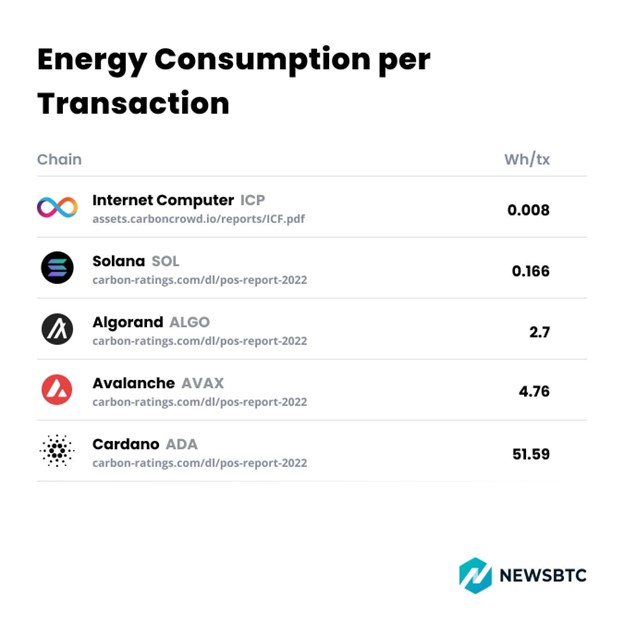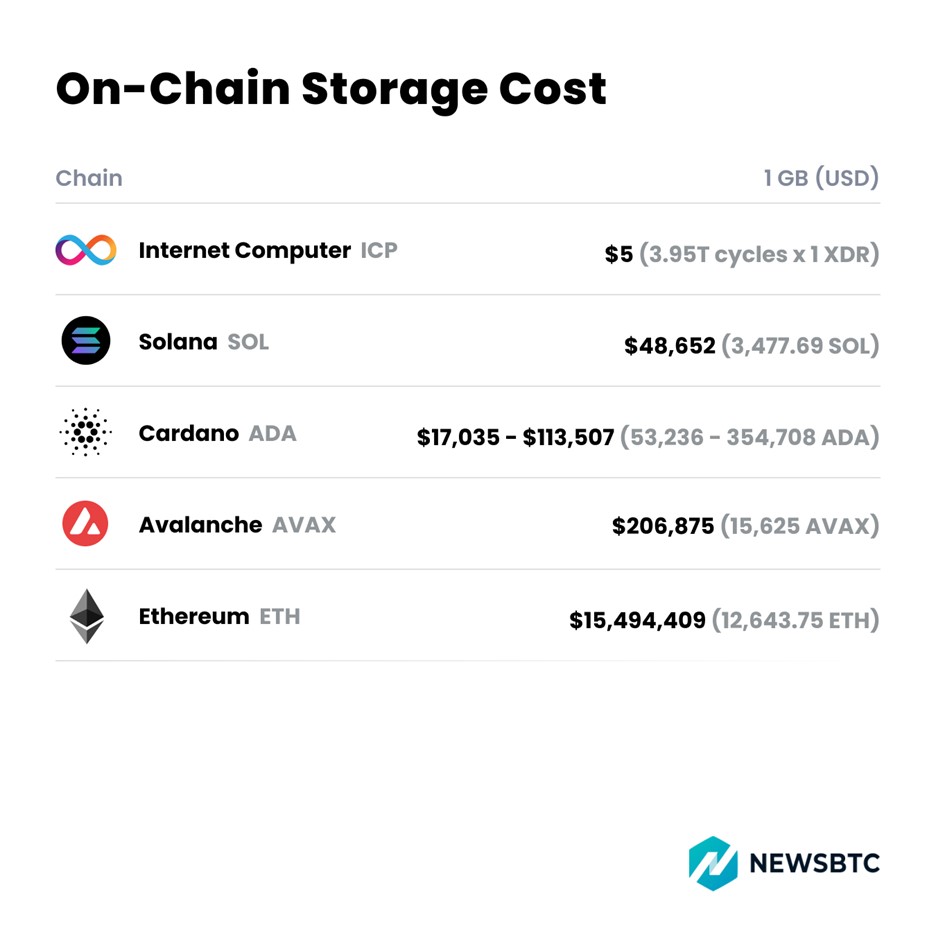Crypto technology has made incredible advancements over the past few years, and now the blockchain protocol industry is extremely competitive. As gains have been made with speed, scaling, and power consumption, the promise of Web3 and the growth of a blockchain-based internet are beginning to redefine possibilities in tech.
With Bitcoin, blockchain technology was first introduced as a financial tool for creating and managing cryptocurrency. It quickly evolved into programmable money and smart contracts after the launch of Ethereum. Now blockchain aims to counter the centralization of all databases, storage, and computation to support innovative new dapps and services.
As the industry matures from a predominant focus on financial products to become a revolutionary decentralized technology stack for Web3, a handful of key metrics are useful for comparing and assessing layer-1 competitors: transaction throughput, finality, transaction cost, energy efficiency, and on-chain storage cost.
This article presents a review of those metrics from leading protocols sourced from public datasets and real-time dashboards to give a clear and comparative picture of the level at which these chains currently operate.
Transaction Throughput
In order for blockchain networks to attract users, they must be able to provide an experience that meets the expectations of today’s web users and do so in a scalable manner. This means delivering speedy website and application screen loads (read operations) and moderately fast data writes. Most blockchains perform well enough on read operations, but layer-1 protocols can struggle to scale their data writes such that they can accommodate millions of users and still provide a good user experience.

Throughput is a measure that captures the scalability of a network — the ability of a blockchain to write data and update state for millions and billions of web users and Internet of Things (IoT) devices. In order to provide a satisfactory user experience for mainstream internet users, a blockchain needs to be able to process thousands of transactions per second. Only Solana and the Internet Computer demonstrate actual transaction speeds that accomplish this feat, though most of Solana’s transactions are vote transactions by validators. Vote transactions don’t exist on other chains; the SolanaFM explorer puts Solana’s true TPS at about 381. Other chains either haven’t generated the traffic required to demonstrate high throughput or are technically incapable of achieving high throughput.
Finality
Finality refers to the average amount of time that passes between the proposal of a new valid block containing transactions until the block has been finalized and its content is guaranteed to not be reversed or modified. (For some blockchains, like Bitcoin, determining the moment of finality can only be probabilistic.) This metric also affects the user experience, as users are unlikely to use applications that require more than a few seconds to complete an operation.

Transaction Costs
Blockchain has its roots as a financial product that can provide much lower transaction costs than traditional finance, and that can execute transactions faster. High transaction costs have shaped the way we use the internet and monetize content. Due to these costs, content creators and applications tend to prefer larger transaction value models, such as subscriptions or bulk purchases of content. Transaction costs are typically correlated in some way to the value of their associated network tokens, so the following values are current as of writing during the week of Nov. 14, 2022.

Cheaper transaction costs can support the development of new revenue models for websites and applications, such as micro-transaction models like tipping. For these types of models to emerge, the transaction costs of the blockchain must be a fraction of the expected average transaction value.
Energy Efficiency
Industries around the world are working on becoming more sustainable in the face of climate change. Energy efficiency has also become a major area of focus within the crypto sector, where it can also be viewed as a measure of a blockchain’s ability to execute and, by extension, scale.

Improving the efficiency of a blockchain not only decreases the carbon footprint of the technology stack, but also reduces the energy costs associated with the protocol. Networks that are more energy efficient, and the applications that are built on top of them, will have an advantage in an increasingly competitive market.
On-Chain Storage Cost
On-chain storage has been a persistent challenge for blockchains, which generally have difficulty scaling to meet the demands of consumer-facing applications that require substantial data hosting. This has forced many developers to rely on Web2 intermediaries for storage and frontends, compromising security, resilience, and decentralization.

The Internet Computer was found to have the lowest and most stable cost for on-chain data storage among top-performing L1’s. “Gas” takes the form of “cycles,” with 1 trillion cycles pegged to 1 XDR (equivalent to $1.31 at time of writing). Developers convert ICP into cycles to pay for data usage, with 1 GB per month requiring 329B cycles equaling $0.423 — equating to $5.07 per GB per year.
The cost of data storage on L1 protocols typically fluctuates with the value of their associated network token, with the expense going up along with the token’s value and vice versa. Solana’s rent per byte-year is 0.00000348 SOL at time of writing, which comes to 3,477.69 SOL rent per GB per year. At SOL’s current price of $13.99, this equals a rate of $48,652.
Cardano cannot currently store non-financial data such as media files, and stores all transactions permanently. For simplicity, we skip the computational cost associated with processing the transaction. At a price of $0.32 at time of writing, the cost of storing 1GB of transactions depends on the size of each transaction, with 2 million transactions of 500 bytes each resulting in 354,708 ADA ($113,506.56), and 62,500 transactions of 16 KB each equaling 53,236.08 ADA ($17,035.54) representing the lowest fee-per-byte.
Avalanche has a gas price of about 25 NanoAVAX, with 32 bytes fetching roughly 0.0005 AVAX. For simplicity, we skip the gas costs of smart contract code execution and of allocating the storage and instead only consider the bare minimum cost of SSTORE operations. This makes storing 1GB of data cost about 15,625 AVAX. AVAX is $13.24 at time of writing, which comes to $206,875.
Ethereum’s congestion and high cost has inspired the push toward on-chain efficiency, and it still sets the expense bar. For simplicity, we skip the gas costs of smart contract code execution and of allocating the storage and instead only consider the bare minimum cost of SSTORE operations. The network consumes 20K gas units to perform SSTORE operation on 32 bytes of data. By extension, it costs 625B gas units for 1 GB of data. With the average gas cost of 20.23 Gwei at the time of writing, that comes to 12.64375T Gwei, or 12,643.75 ETH. With ETH at $1,225.46 at the time of writing, this equals $15,494,409.
Conclusion
As the blockchain industry evolves into a next-generation technology stack capable of reopening the consumer internet, only a handful of platforms have the technical specifications necessary to provide the user experiences expected from the majority of the internet’s users.
Top-performing layer-1 networks will enable the development of applications and services that are not possible, including revolutionary functionality in the areas of security, micro-transactions, and decentralized ownership of data and applications.
Source : newsbtc


